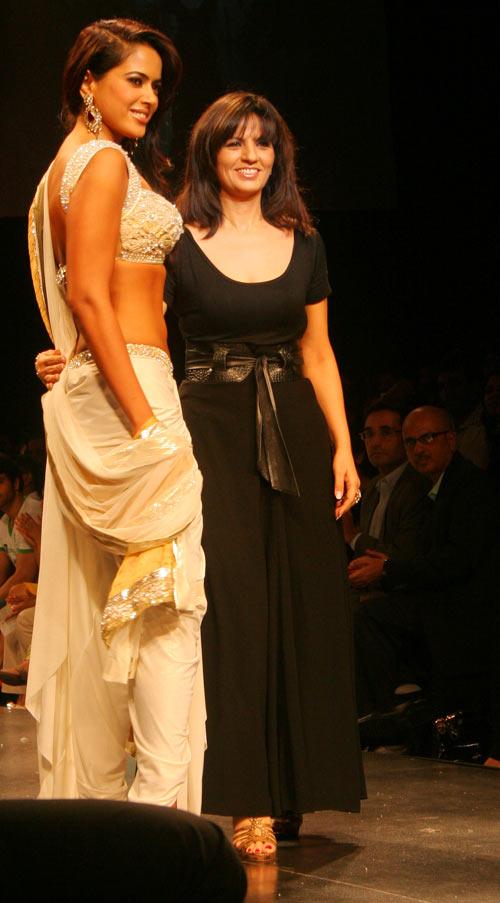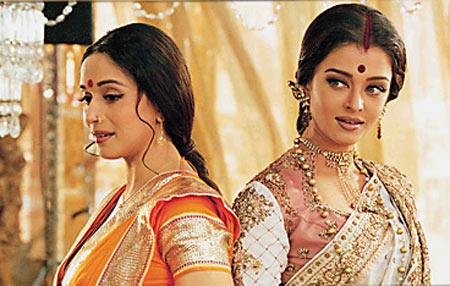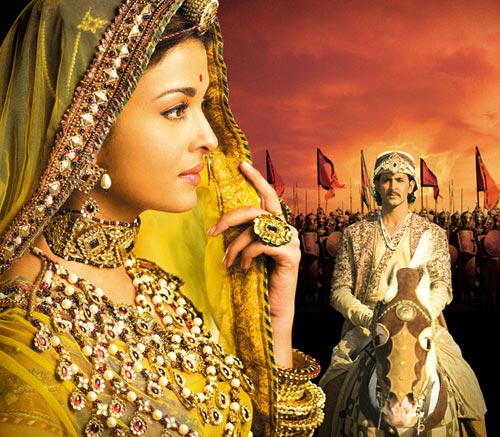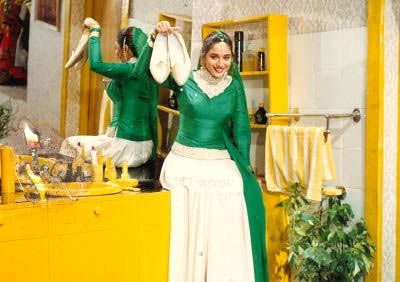 | « Back to article | Print this article |
I research a lot before doing period films
Costume design is based on the director's perception, fashion design on the designer's perception of fashion trends, says Neeta.
Her aim was to be a choreographer but she ended up being a costume designer for films. 20 years into the profession, designer Neeta Lulla has no regrets. From blockbuster Hum Aapke Hain Kaun and gangster flick Khalnayak to period dramas like Devdas and Jodhaa Akbar, the variety of costumes is eclectic.
Her latest national award was for a biopic on Marathi singer and stage actor Bal Gandharva, who took up female roles in a time when women were not allowed to act. Neeta shares her career insights...
How did you get into this career?
During my fashion design course at SNDT I felt inclined towards choreography. But after assisting designer Hemant Trivedi, fashion show choreographer Jeannie Naoroji and post doing one film, I discovered the fashion designer in me.
Tell us about your experience with biggies like Sanjay Leela Bhansali, Subhash Ghai and Yash Chopra.
It is always wonderful to work with such maestros. These are directors with an eye for detail. They appreciated my skill that was only enhanced by the magnitude of their vision, which was ultimately appreciated by the audience.
'Real life fashion design is based on the designer's perception'
What is the difference between designing costumes for movies and real-life fashion?
Costume design is always based on scripts and the perception of the director, the comfort level of the actors and the colour scheme of the canvas of the film. And you style a look from head-to-toe to enhance characterisation.
Real life fashion design is based on the designer's perception of fashion trends. Garments are designed keeping in mind consumer requirements and price points. Fabric and garment finish play a very important role in these outfits.
One costume you enjoyed working on most?
Very difficult to say, as I have enjoyed each and every outfit I have made!
'The most challenging part is the script...'
Is there a lot of research involved in period films? Tell us about the basic process...
I research a lot before doing period films. You have to keep in mind the visuals and the era that film is talking about -- both must synchronise together. The most challenging part is the script and walking the thin line between period and the acceptance of the style by a contemporary audience, today. You cannot give modern costumes to a period film. Yet, you have to maintain a certain sense of style.
What's your take on the quality of fashion design education in India?
I feel there are a lot of good design institutes in India. However, we need to train and guide our students towards specialising in a niche area of fashion.
'Designing has to work hand-in-hand with styling'
Is there a scope for costume designers in films?
Absolutely. However, designing has to work hand-in-hand with styling.
Any advice for budding designers?
Have focus, commitment and dedication. Understanding of your core strength in the field will take you where you want to be.



